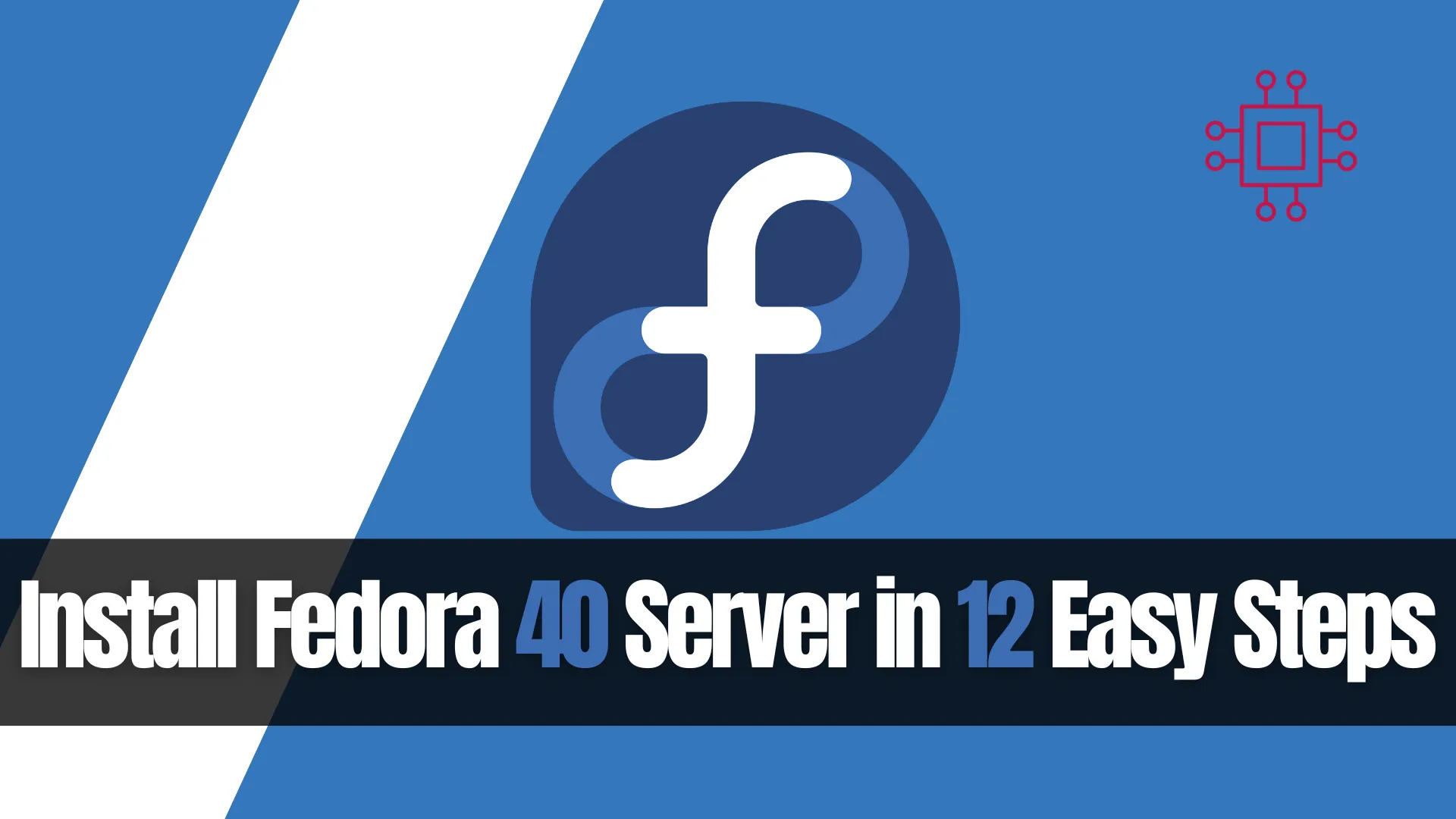
Learn how to install Fedora 40 Server in 12 easy steps. Follow this detailed guide with command-line examples, table charts, and essential setup tips to
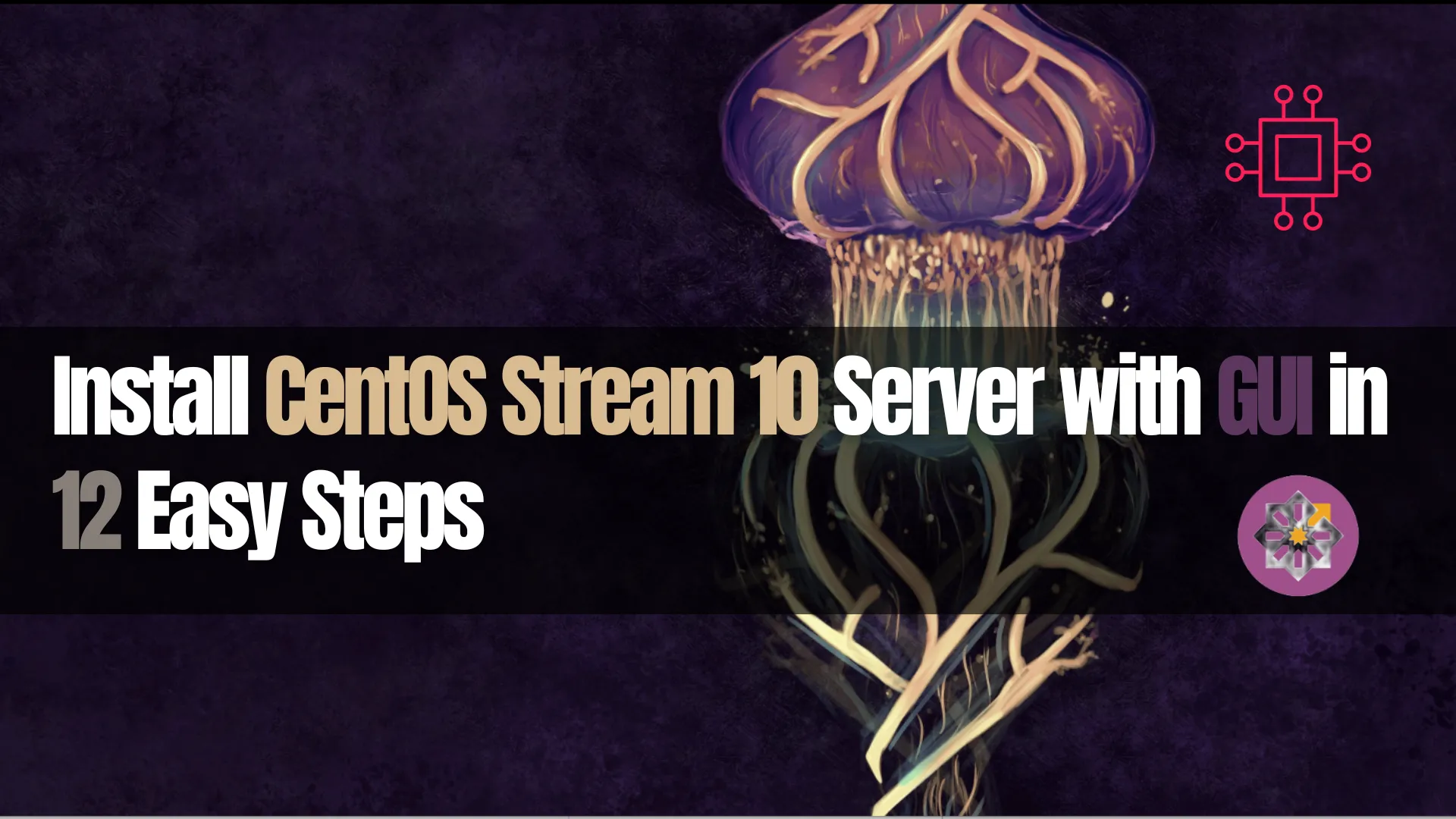
Learn how to install CentOS Stream 10 Server with GUI in just 12 easy steps. This guide provides clear instructions, CLI examples, and tips for configuring a CentOS Stream server with a graphical user interface.
CentOS Stream is an exciting variant of CentOS Linux, offering a rolling-release model, making it a solid choice for developers, system administrators, and those who want a stable yet up-to-date Linux server environment. The combination of CentOS Stream 10 with a Graphical User Interface (GUI) is a powerful tool for both server management and day-to-day tasks.
In this post, we will guide you through installing CentOS Stream 10 Server with GUI in 12 simple steps. Whether you’re an advanced user or a beginner, this tutorial will help you set up a CentOS Stream server with a complete desktop interface.
CentOS Stream serves as a preview of what’s next in Red Hat Enterprise Linux (RHEL). It offers a continuously updated Linux distribution that’s perfect for both enterprise-grade applications and development purposes. By installing CentOS Stream with a GUI, you get the power of a Linux server with the added ease of use provided by a graphical interface.
Here are some reasons why you should consider CentOS Stream for your server:
|
|
|
|
Before starting the installation process, make sure your system meets the following minimum hardware requirements:
| Component | Requirement |
|---|---|
| Processor | 2 GHz or faster (64-bit architecture) |
| Memory (RAM) | Minimum 2 GB (4 GB recommended) |
| Storage | A system with at least 2GB of RAM and 20GB of hard disk space (this can vary depending on the desktop environment you choose). |
| Graphics | Graphics adapter (for GUI) |
| Network | Network card with internet access (optional but recommended for updates) |
You’ll also need:
Step 1: Download CentOS Stream 10 ISO |
Download the latest CentOS Stream 10 ISO from the official CentOS website or a reliable mirror.
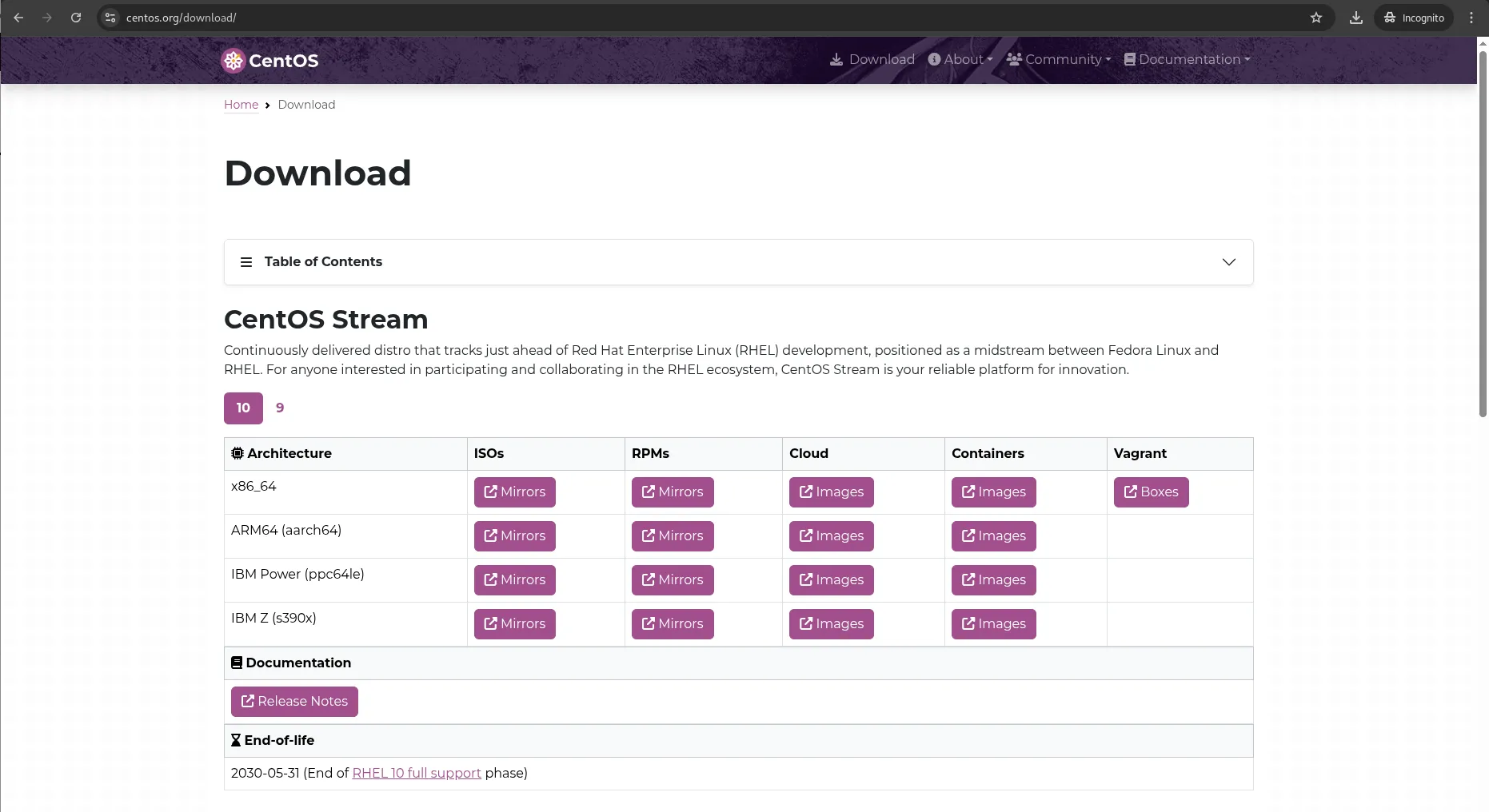
Photo by admingeek from Infotechys
Step 2: Create a bootable USB |
To install CentOS Stream 10, you need to create a bootable USB drive. This can be done on any system that supports USB booting.
sudo dd if=/path/to/CentOS-Stream-10-latest-x86_64-dvd1.iso of=/dev/sdX bs=4M status=progress oflag=sync
Once the process is complete, unmount the USB drive.
Step 3: Boot from USB |
Insert the USB drive into the machine you want to install CentOS stream 10 on. Reboot the system, and during the boot process, press the appropriate key to enter the BIOS/UEFI settings (usually F2,F8,F9,F10, Esc`, or Del depending on the manufacturer).
From the boot menu, select the USB drive as the boot device–to proceed to the GRUB menu.
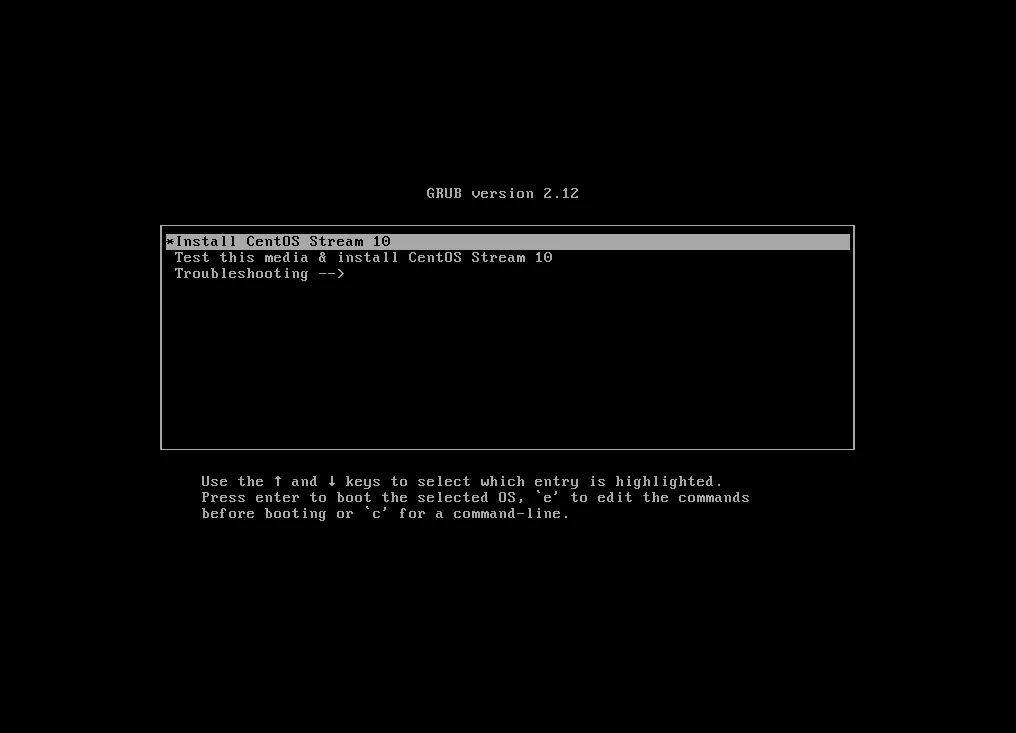
Photo by admingeek from Infotechys
Step 4: Select Installation Language and Keyboard Layout |
Once CentOS Stream 10 starts, you will be presented with the installation screen.
|
|
Click Continue to proceed.
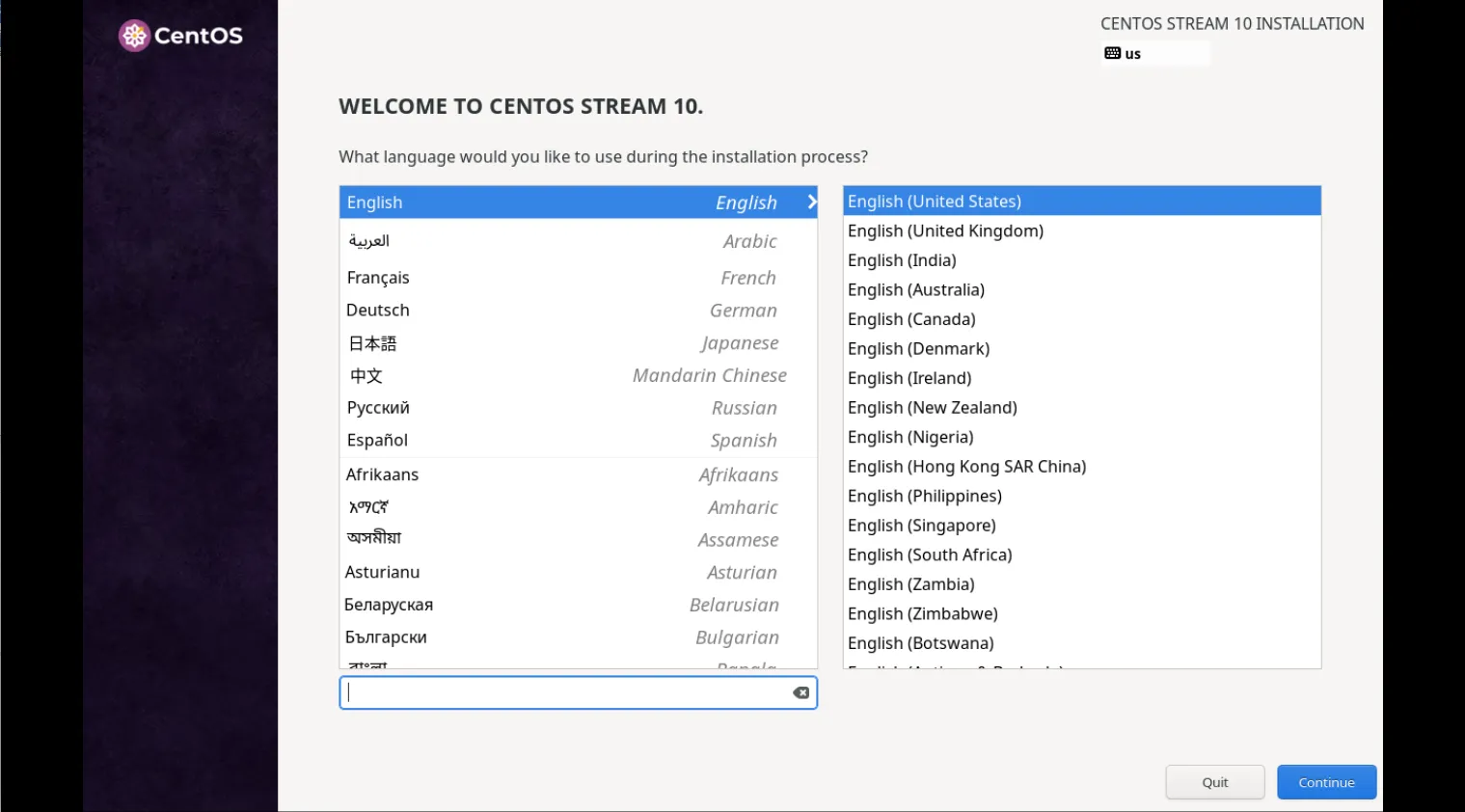
Photo by admingeek from Infotechys
Step 5: Configure Disk Partitioning |
On the installation summary page, you’ll need to configure your disk partitioning.
|
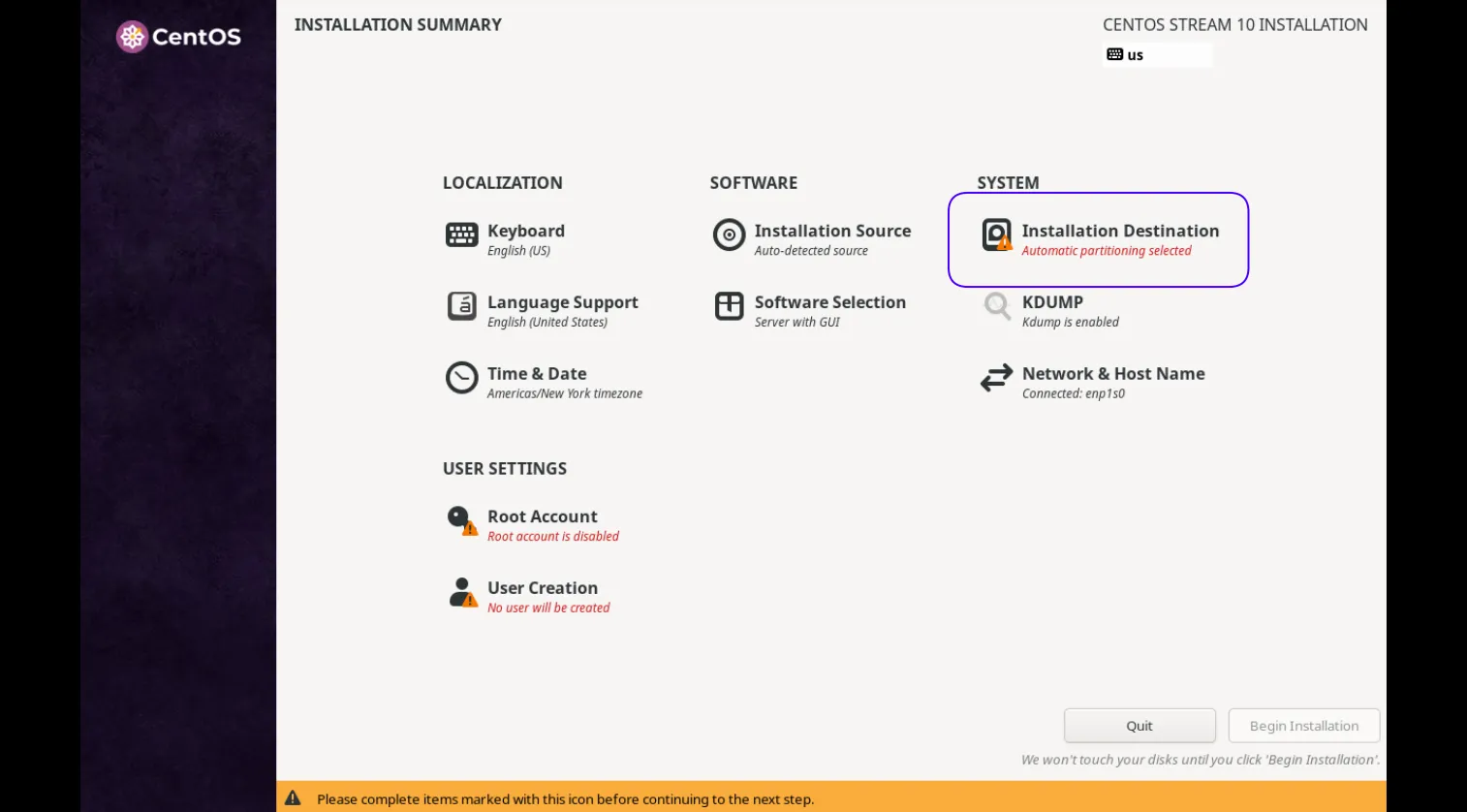
Photo by admingeek from Infotechys
You can either use the automatic partitioning option (recommended for most users) or configure custom partitions.
|
|
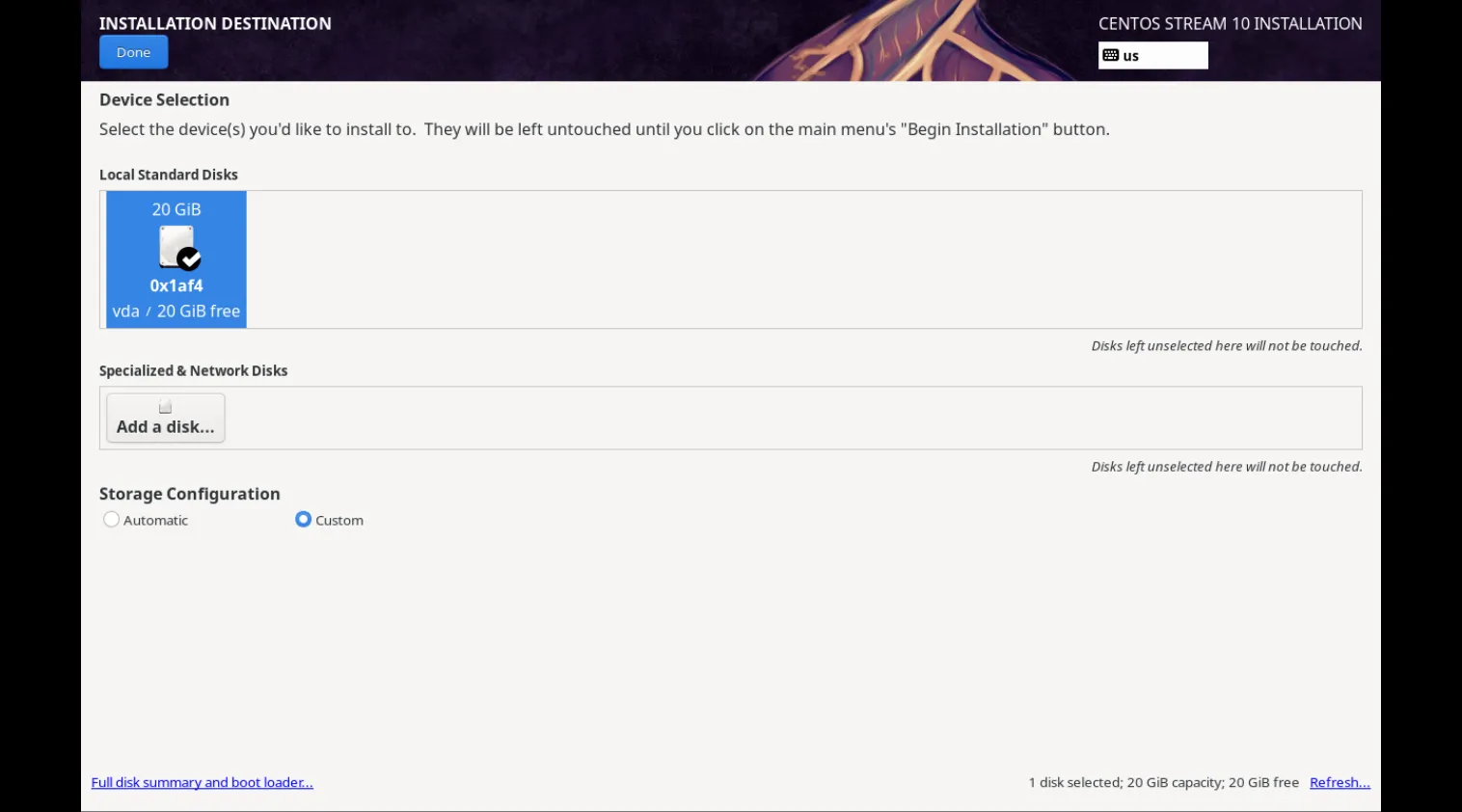
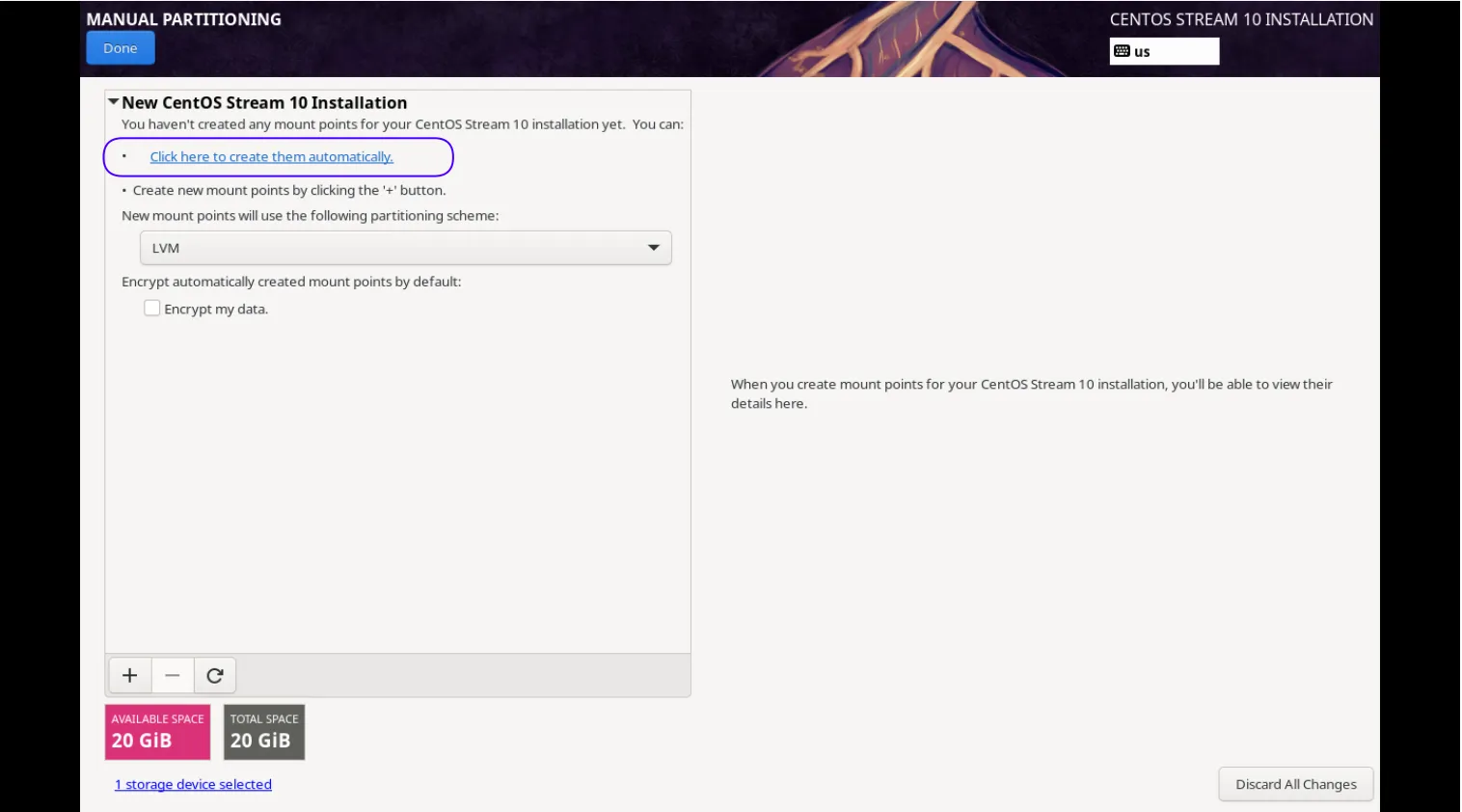
| Partition | Size | Mount Point |
|---|---|---|
/boot | 1 GB | /boot |
/ | 14 GB | / |
/home | Remaining Space | /home |
swap | 4 GB (or more) | N/A |
After configuring the partitions, click Done. Then, click the Accept Changes button to continue.

Photo by admingeek from Infotechys
Step 6: Set Up Network and Hostname |
Next, configure your network settings. Click on Network & Hostname to:
|
|
Ensure that Automatic IP Configuration is selected unless you are using a static IP address.
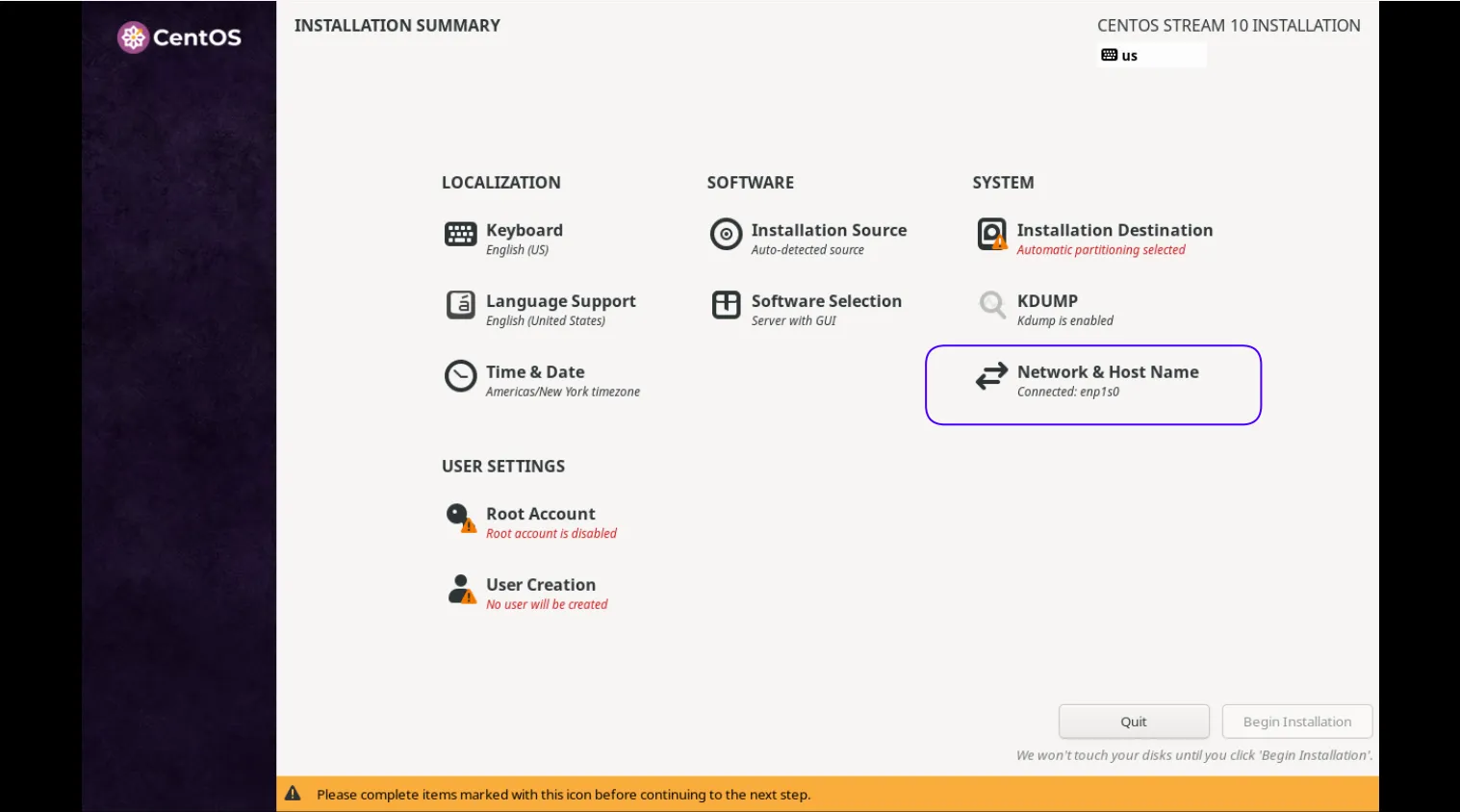
Photo by admingeek from Infotechys
Step 7: Select Software Installation |
Here, you can choose what type of software you want to install. For a server, select the Server option or, Server with GUI which includes the GNOME desktop environment, graphical utilities, and other essential software.
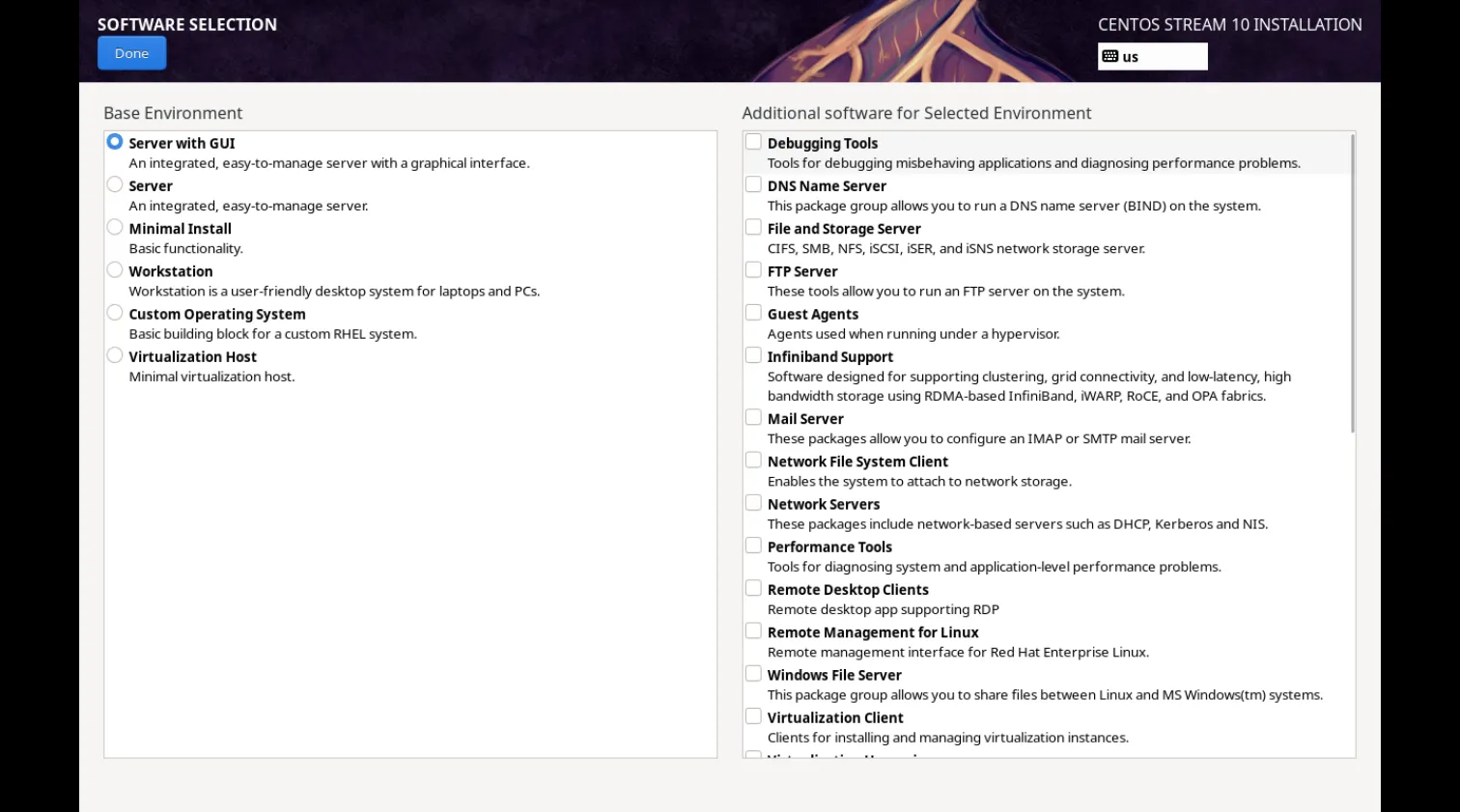
Photo by admingeek from Infotechys
💡You may also choose to install additional software packages such as Development Tools, Web Server, or Virtualization, depending on your specific environment and use case. |
Step 8: Configure User Accounts and Settings |
Set up a root password and user credentials.
|
|
Finally, you’re ready to begin the installation.
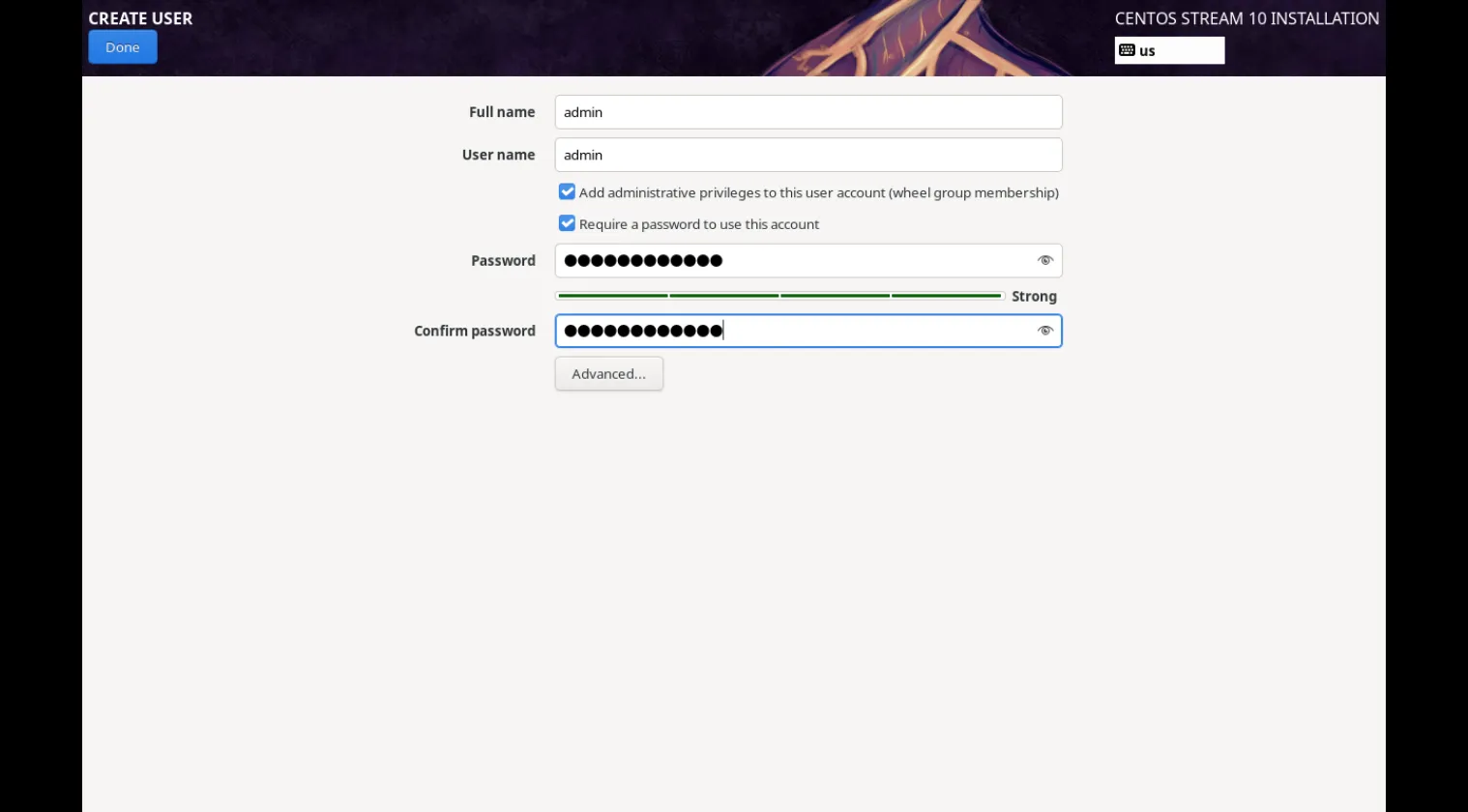
Photo by admingeek from Infotechys
Step 9: Begin Installation |
After configuring everything, click Begin Installation. The installer will now start downloading and installing packages to your disk. This process might take some time, depending on your system’s speed and the selected software packages.
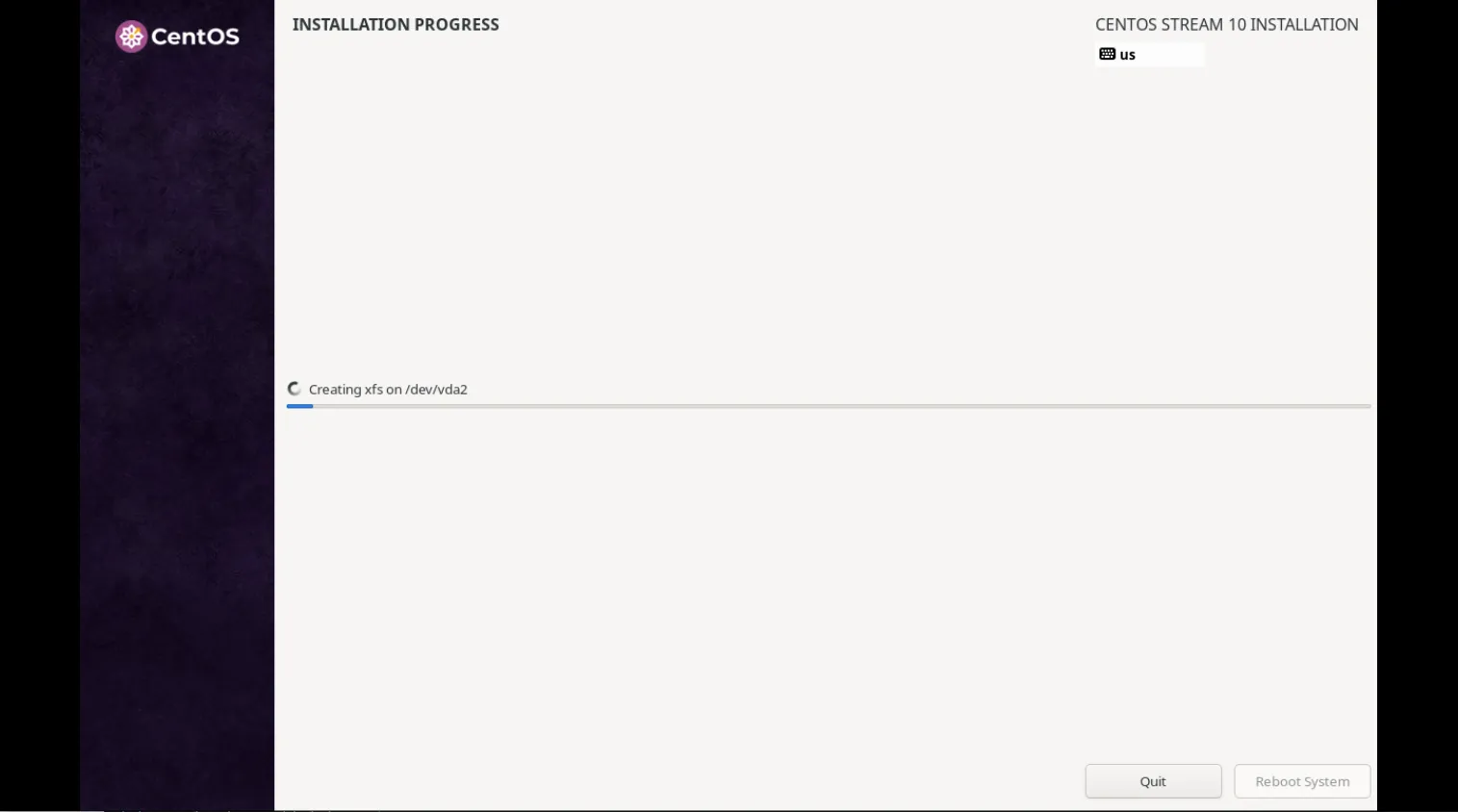
Photo by admingeek from Infotechys
Step 10: Reboot the System |
After the installation is complete, the system will prompt you to reboot. Click Reboot and remove the USB drive from the system to avoid booting from it again.
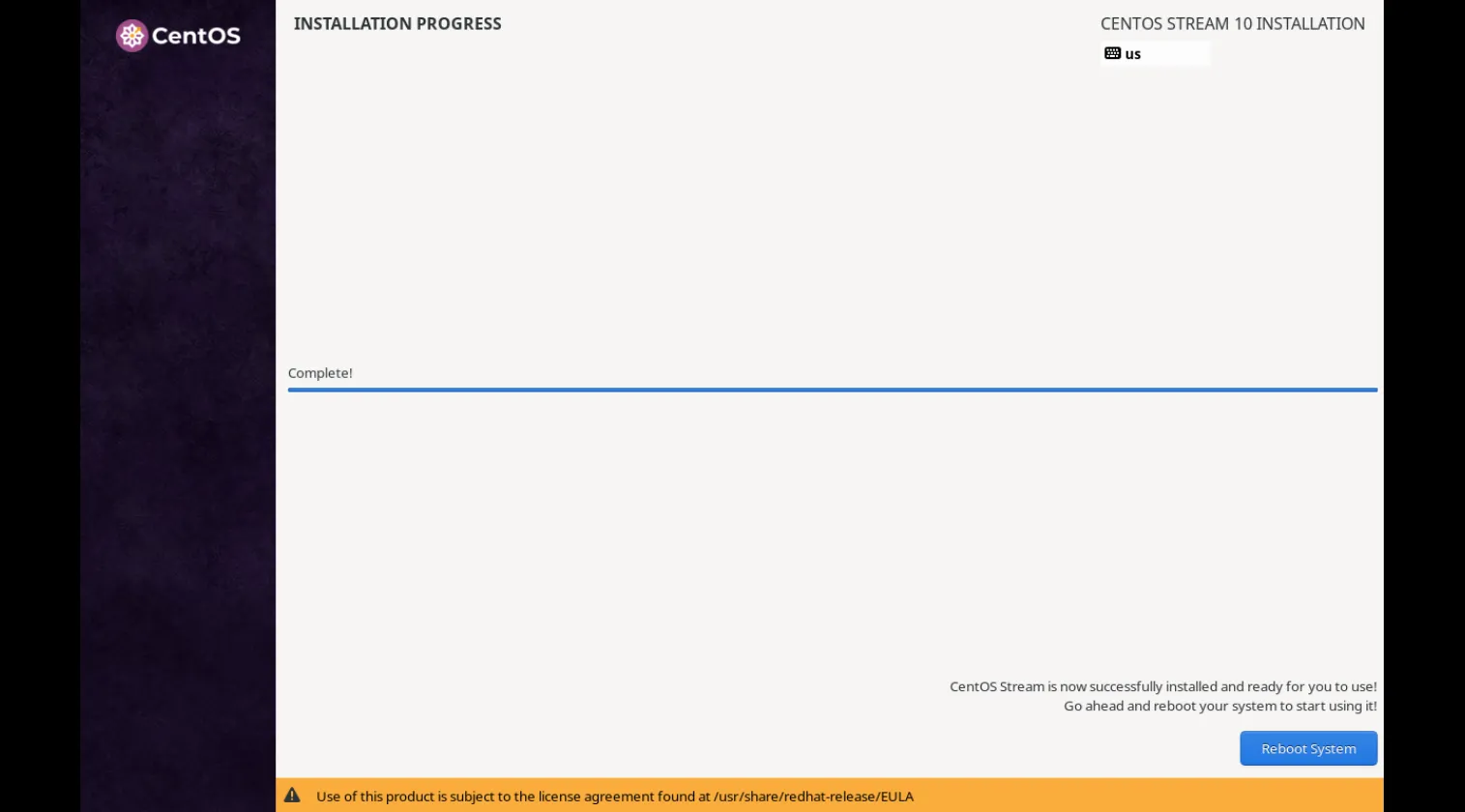
Photo by admingeek from Infotechys
The system will now boot into your newly installed CentOS Stream 10 Server.
Step 11: Post-Installation Setup |
Once you’ve booted into CentOS Stream 10, you’ll want to perform a few post-installation tasks (e.g. Take the tour (optional) or change settings, etc.)
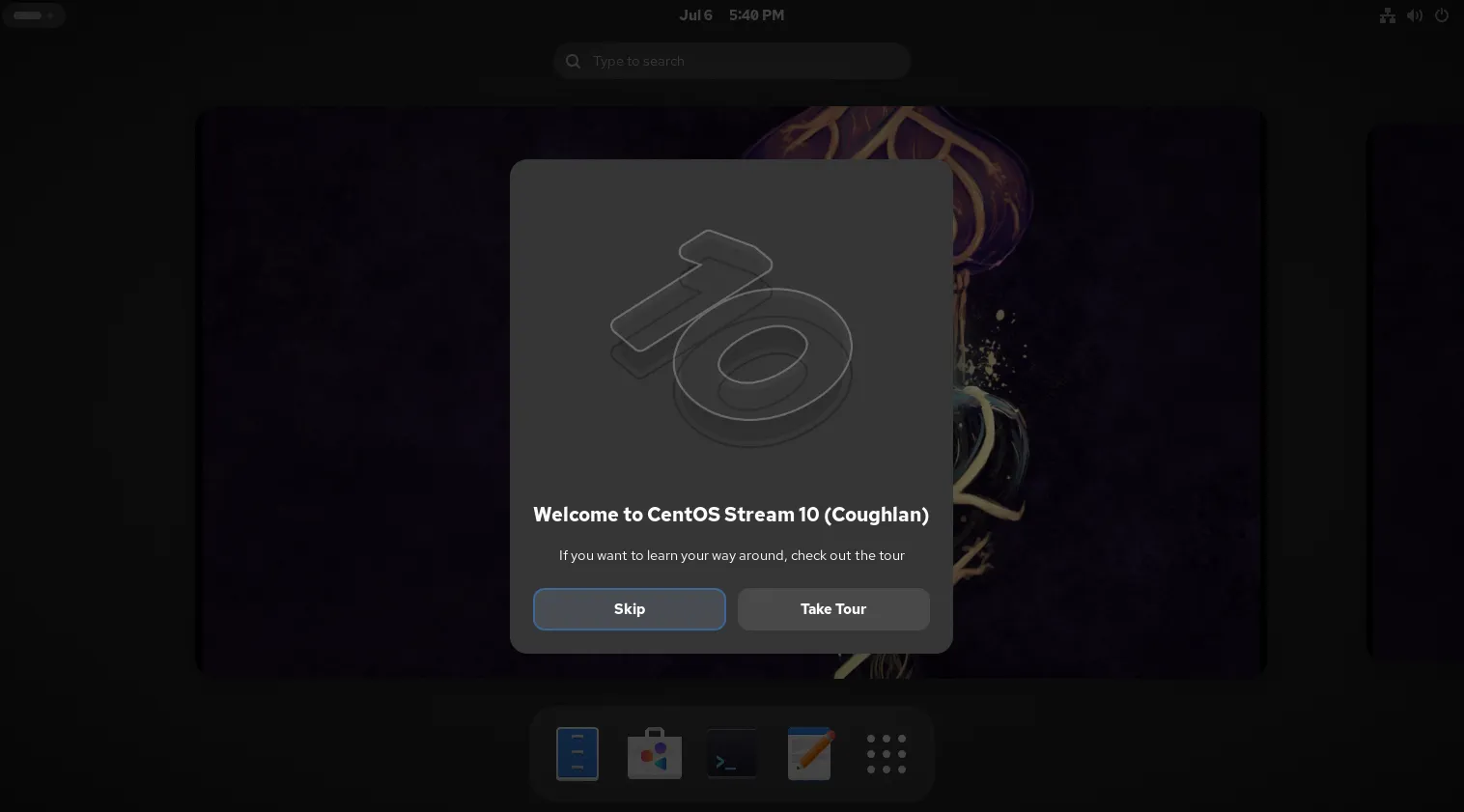
Photo by admingeek from Infotechys
It’s a good practice to run the command below after installation to make sure you have the latest security updates:
sudo dnf update -y
Step 12: Customize your environment |
This involves any number of things from installing new packages to changing the look and feel of your environment (if you installed the Server with GUI)
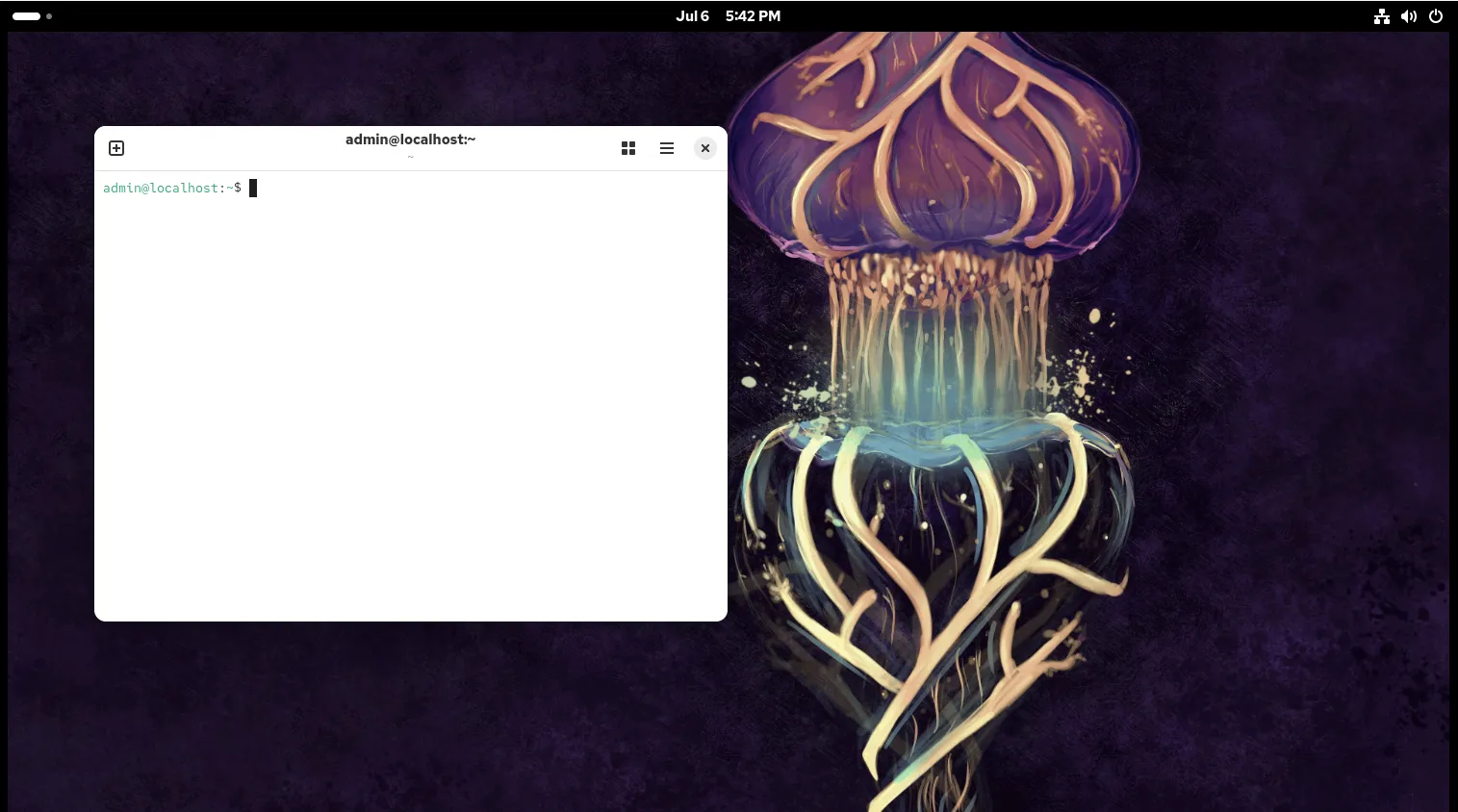
Photo by admingeek from Infotechys
Depending on your use case, you can install additional packages or third-party repositories. For example, run the following command to install the extra packages repository (EPEL) for CentOS Stream 10:
sudo dnf install epel-release -y
Congratulations! You’ve successfully installed CentOS Stream 10 Server with a GUI. You now have a fully functional CentOS system with a graphical user interface, which can be used for various tasks like web development, system monitoring, or as a personal desktop environment.
Did you find this article helpful? Your feedback is invaluable to us! Feel free to share this post with those who may benefit, and let us know your thoughts in the comments section below.

Learn how to install Fedora 40 Server in 12 easy steps. Follow this detailed guide with command-line examples, table charts, and essential setup tips to
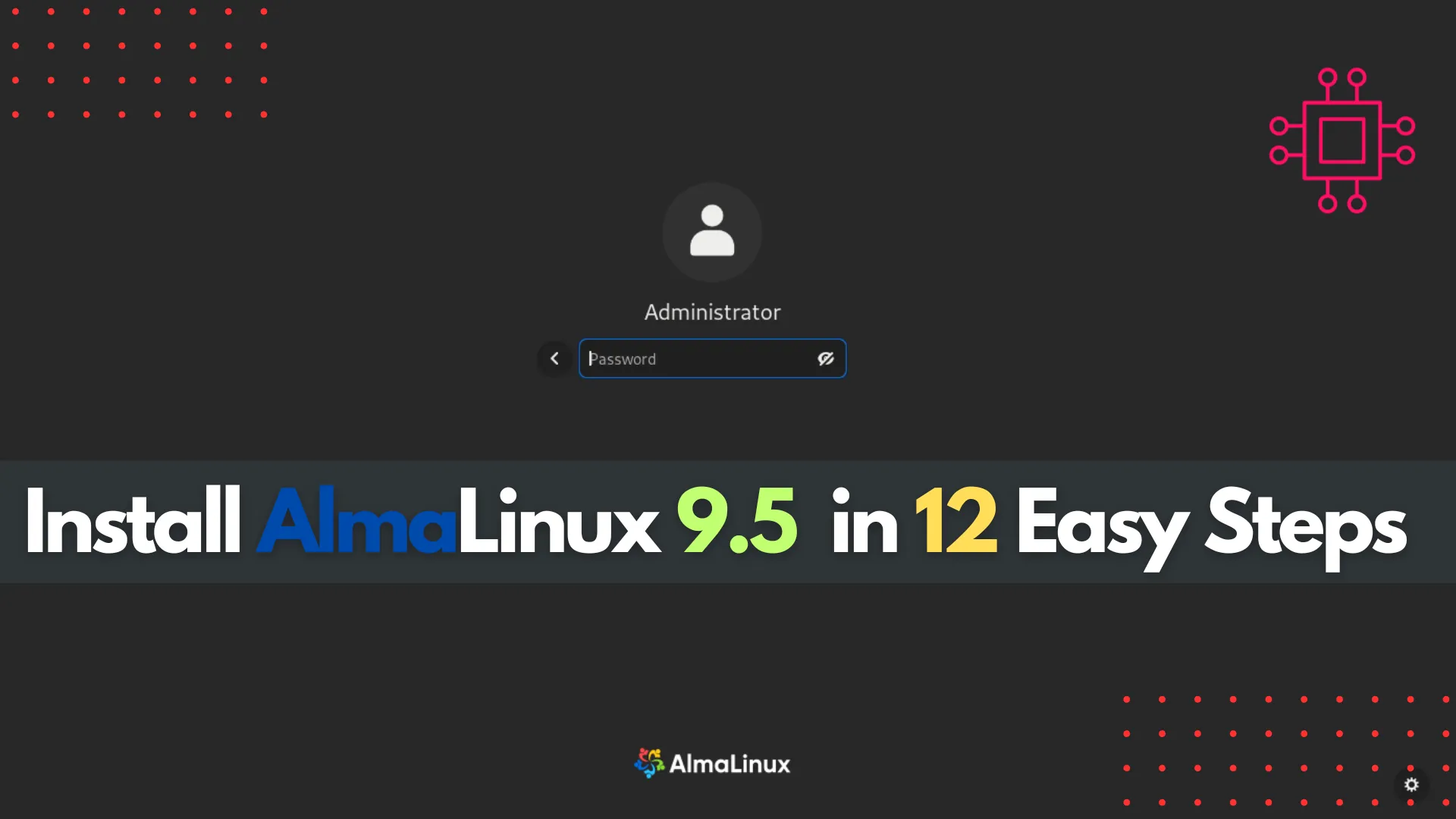
Learn how to install AlmaLinux 9.5 in 12 easy steps with this comprehensive guide. From downloading the ISO to configuring your system, follow our detailed
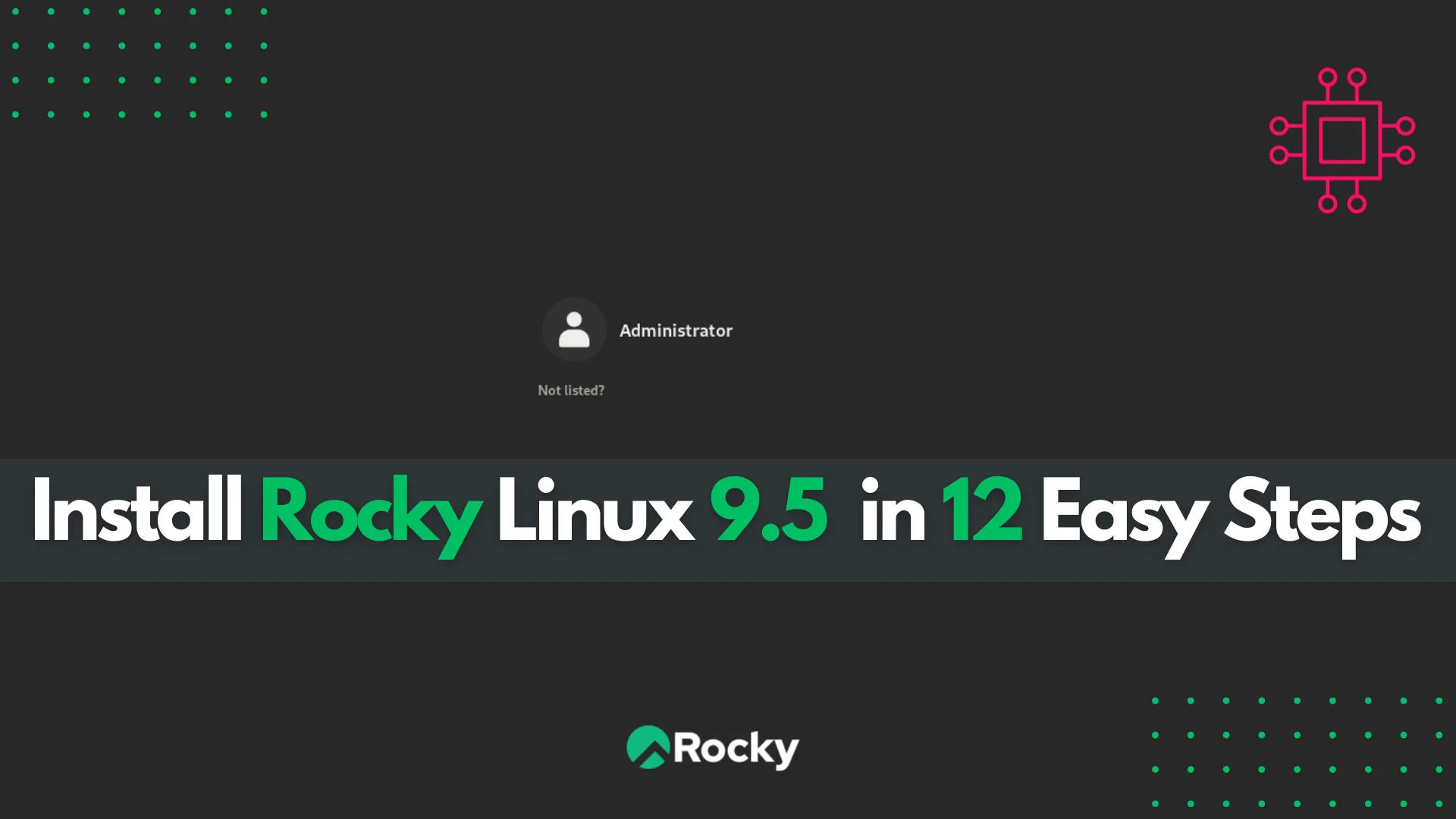
Learn how to install Rocky Linux 9.5 in 12 easy steps with this comprehensive guide. Follow our step-by-step instructions, including CLI examples, to set up
